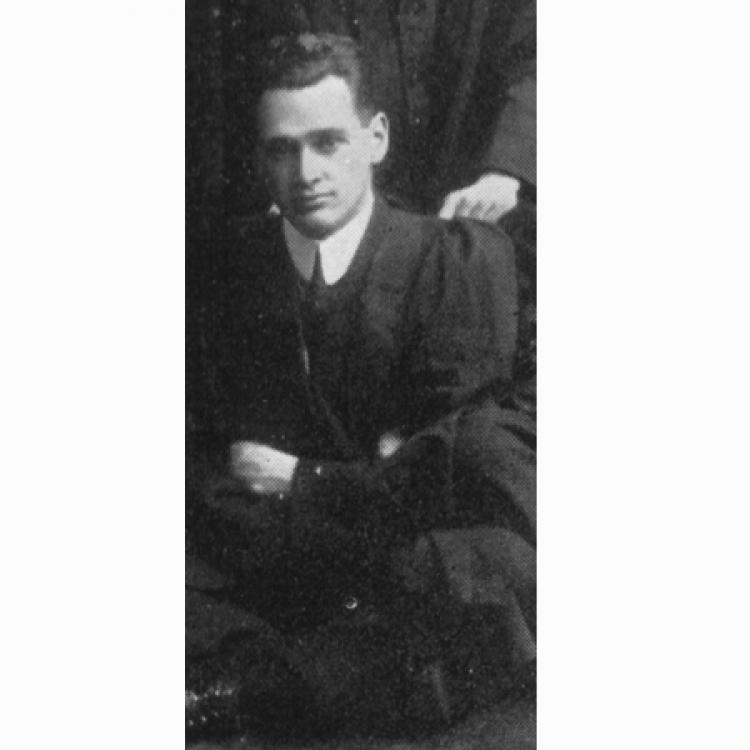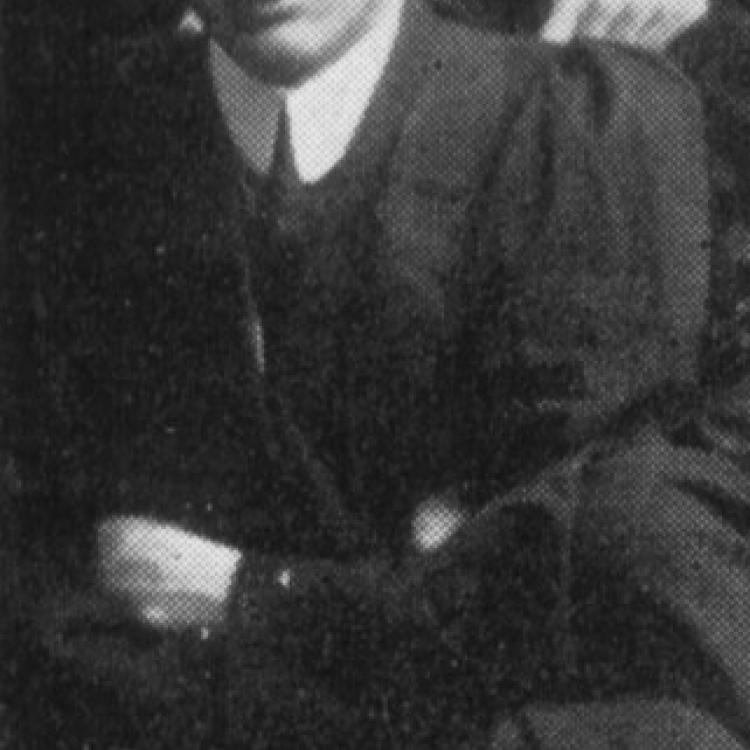FOSTER, Frank James
Next of Kin: Adam and Sarah Ellen Foster, Goderich, Ontario
Occupation: Student
Personal Details: 5 ft. 9 3/4 in., 141 1/2 lbs., fresh complexion, brown eyes, dark brown hair, Church of England
Born in Clinton, Ontario, Frank Foster was the oldest child of Adam and Sarah Ellen (Cook) Foster. According to the 1911 Census, the family had moved to Lighthouse Street in Goderich, and had grown to include children Mary, Jessie, Roy and Isabella.
Frank’s early education was received at Clinton Public School and Goderich Collegiate Institute. From 1910-14 he attended University College at the University of Toronto where he received a BA in Political Science, was on the ‘Varsity’ staff, and a member of the Literary Society Executive. He decided to enter the legal profession and was employed for two years at the firm of Hogarth & Ross in Regina, Saskatchewan. He had passed all but the final examination when he enlisted. A January 1916 letter written by Frank to his parents was published in The Signal, August 30, 1917, explaining his decision to enlist. He wrote: “Somebody has to be ready to go to take the places of those who have fallen. Why should I, able-bodied and in good health, be one of those to shirk the duty of every able-bodied citizen?” He felt very keenly his obligation to his parents and their reluctance to let him go, and he trusted that he would have a “reasonable chance” of returning home and fulfilling the filial obligation which he felt resting upon him, but, he wrote, “when I look back and take note of the fellows who have fallen in this awful struggle and then ask myself why they should suffer and not I, the only answer is, prepare to do your bit also.”
In June 1916 Frank enlisted in the Canadian Officers’ Training Corps, and spent the summer training in Toronto. In September he was discharged after being identified as a candidate for a commission in the British army, and joined the Royal Flying Corps after passing first in the qualifying examination. He then went to France in April 1917 and joined the 11th Squadron, which was based on the Lens-Cambrai front. The July 5, 1917 Clinton New Era reported, “Former Clinton Boy Has Novel Mail Delivery ~ Canadians in Trenches Receive Toronto Papers From Aeroplane ~ A weekly Canadian mail delivery to the boys in the trenches via the air route has been organized, according to a letter received from Flight Lieut. Frank J. Foster. He says: “My observer and myself have been saving up our Stars and Sunday papers, and yesterday we flew over the Canadians behind Vimy Ridge and dropped them one or two parcels. Although old, the papers were interesting. It was some stunt, as we had to come down within 100 feet of the trenches.”
No. 11 Squadron was formed on February 14, 1915 at Netheravon, Wiltshire, and was sent overseas as a fighter squadron. In August 1917 the squadron, now based at Bellevue Aerodrome near Warlincourt, France, received new Bristol fighters which were used for offensive patrols and ground attack rolls over the enemy lines. The ‘Biff’ was a maneuverable and heavily armed two-seater aircraft manned by a pilot and an observer. It was powered by a 275 HP motor, had a top speed of 123 mph at 5,000 feet, with a ceiling of approximately 20,000 feet, and it had a three-hour endurance. The armament was a forward-firing synchronized Vickers machine gun utilized by the pilot, while the observer had one or two Lewis guns on a Scarff ring. The fighter could also carry 240 pounds of bombs.
On the day Second Lieutenant Foster died he and a number of other squadron members were out on patrol in the area of Warlincourt when a storm broke out. Many of the machines began to return to base, including Foster and his observer, Lieutenant David Grant Davidson, who had transferred from the 2nd Divisional Canadian Signal Company. Foster was just about to land when another plane crossed in front of him. He could have landed safely but in doing so would have put those in the other aircraft in danger. He pulled up and began to gain height but his aircraft stalled and crashed to the ground, instantly killing him and Davidson. Foster and Davidson were buried next to each other in Warlincourt Halte British Cemetery, Saulty, France.
Frank’s brother Roy also enlisted at London, Ontario on May 5, 1917, in the Army Medical Training Depot No. 1, but was discharged due to being underage.




